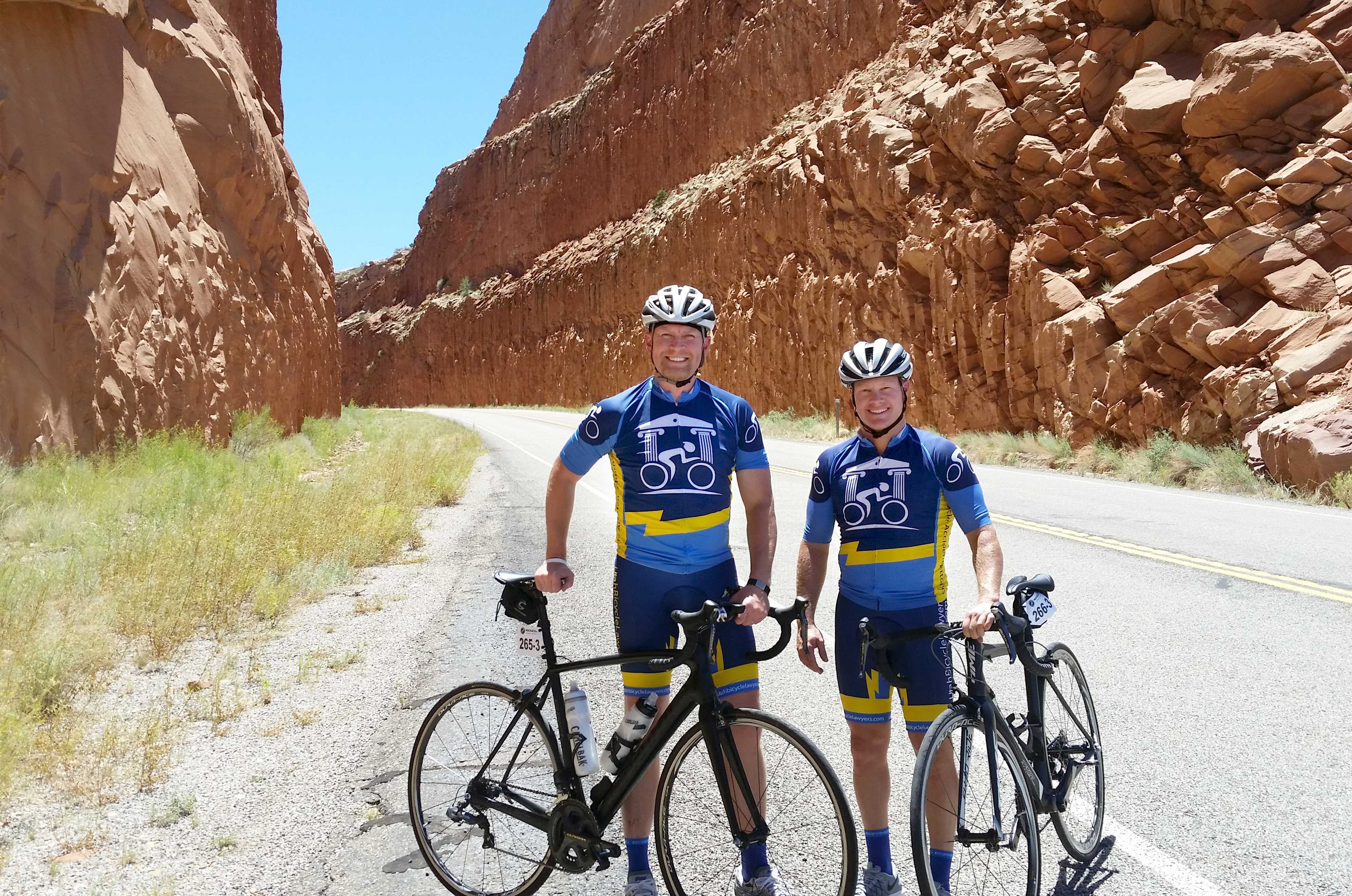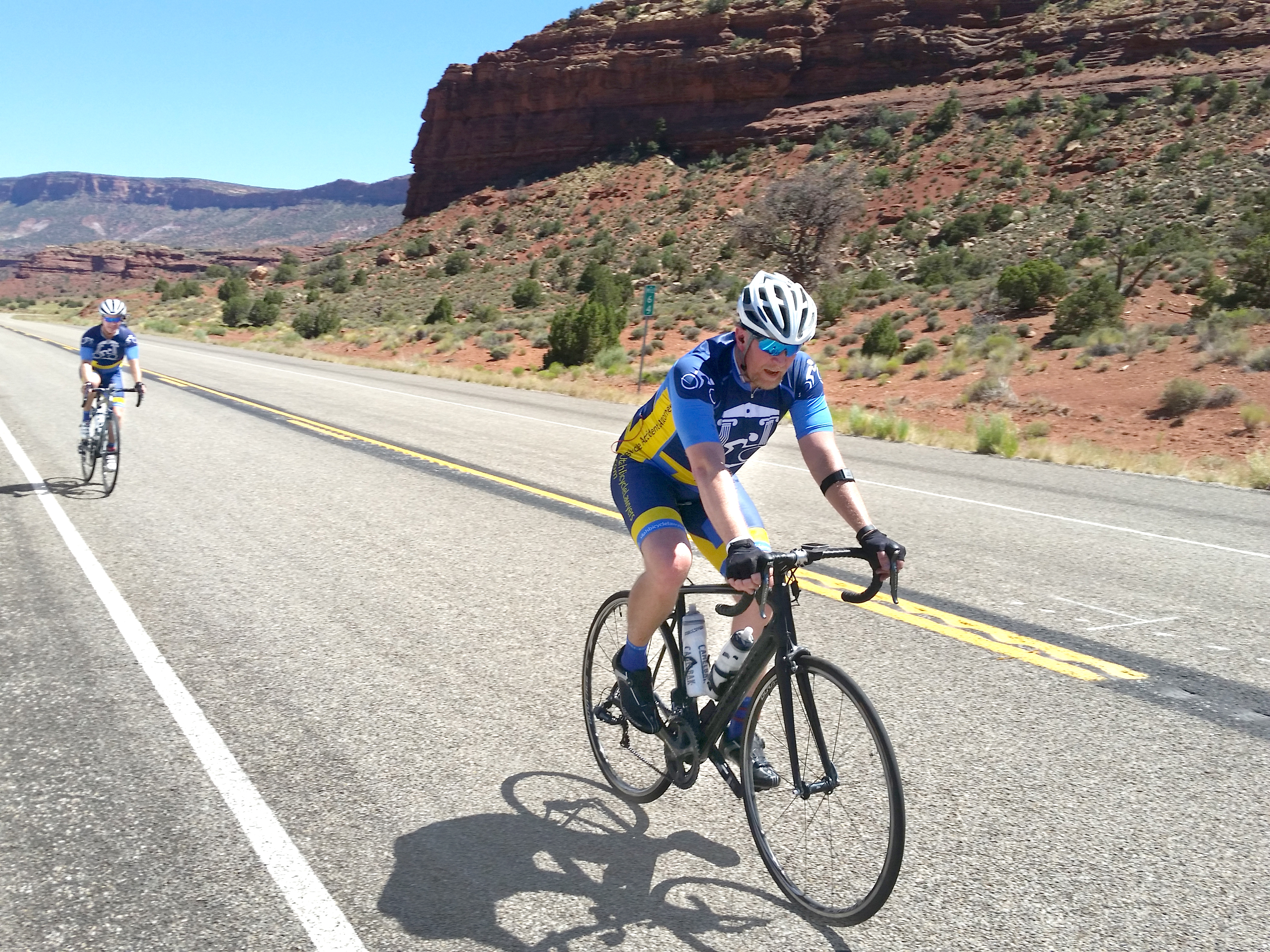
A few weeks ago, Russ, a couple of friends, and I piled into a motorhome and drove down to Southern Utah for the Rockwell Relay. The relay from Moab to St. George spans 525 miles through canyons of red rock, gorges, and hoodoos. It’s a challenging race, both in terms of distance and elements. Cycling through the desert means extreme weather conditions: blistering hot in the day, and near-freezing temperatures at night. Steep inclines and insane simultaneous headwinds add an additional challenge.
The relay is divided into 12 legs. Each leg includes its own set of challenges, whether its incline, temperature, or wind, you simply cannot expect to have the same experience on each leg of the race. Russ and I rode our three legs together, totaling 153 miles.
Leg 1
We started from Mule Canyon in scorching 97 degree weather. The headwinds also made it harder to complete 56.8 miles to Dirty Canyon Bridge. Its a long ride, but a beautiful one. The tall vermillion cliffs and utter seclusion distracted us from the heat. It’s a phenomenal experience to be so engrossed in these intimidating maroon walls of sandstone and be completely alone with them. Although the leg was long, it gradually declines for 51 or so miles until you meet up with the Colorado River and Lake Powell. As tempting as it was to jump in the lake, we had a race to finish.

Leg 2
A cold night.
The stretch from Boulder to Henrieville is breathtaking. It offers dramatic views of Grand Escalante, with steep drops on either side of the road. You see rivers and waterfalls, gorges and canyons, waves and ripples of heat rising from the road. Unfortunately, we started this leg at 2:30 in the morning and didn’t get to see much of the scenery. It was 40 degrees, the fog of our breath lead the way down the meandering road to the Escalante River. In the light of the full moon, we were able to enjoy a mysterious illumination of the landscape.
The stretch is 56.6 miles long with a painfully long incline into the Dixie National Forest. At some points you were as high as 7,000 feet. It was a cold, dynamic ride and we weren’t able to finish until 6 o’clock that morning. The good thing about having a motorhome is that we could take a break and sleep comfortably when we weren’t racing. I crashed on the bed for a few hours until we rode our last leg around noon.
Leg 3
Our final leg was rigorous. Its rigor was a combination of a few factors: little sleep, physical exertion from riding over 100 miles, and trying to conquer a fortress of 20 mph headwinds. Although this leg was shorter than all the others, amounting to only 41.5 miles, the wind factor made it feel like 70 miles. We started from Cedar City and headed west towards a town called Enterprise, a small farming community. Four miles into the race you encounter a 1,000 foot climb into the Iron Mountain Pass. That climb, in combination with the brutal headwinds and 95 degree tempatures, made me wish I was back in the motorhome.
After thoughts
Our team rode into St. George after 27 hours of continuous cycling. It was an exhausting day, but I cannot wait to do it again next year. The Rockwell Relay is definitely challenging. There are a myriad of unpredicted elements that add variety. However, I think that the best part of the Rockwell Relay is the aspect of teamwork. Normally you try to finish on your own, ride on your own, or outpace yourself. At the Rockwell, you’re riding with a group of friends to accomplish a great goal. I recommend this race to any avid cyclist.
